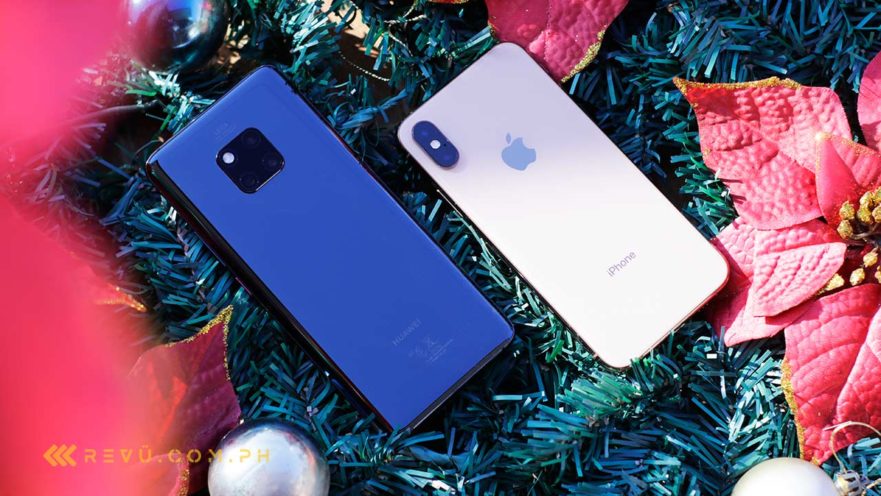It’s an all-out battle between two of the best and most feature-packed flagship smartphones of any platform, with the powerhouse Huawei Mate 20 Pro squaring up against the Apple iPhone XS for a brawl.
The Mate 10 Pro successor is everything you could ask for in a top-shelf phone — brilliant in design, specced to the hilt particularly in the imaging department, and reasonably priced for such a tech showcase.
SEE ALSO: Blind camera test: iPhone XS vs Mate 20 Pro vs Galaxy Note 9
While it has not been selling as well as Apple hoped, even prompting the company to cut orders for components of the handset and restart production of last year’s iPhone X, the iPhone XS is still the best non-Max iPhone money can buy.
But which is the better smartphone — the Huawei Mate 20 Pro or Apple iPhone XS? How does the 2018 flagship from the world’s second-largest smartphone vendor stack up against the newest iPhone? Here’s what we think, after a significant time with them both.
Premium looks, premium feel
As you would expect from a premium device, both the Huawei Mate 20 Pro and Apple iPhone XS not only look like they’re two of the more expensive flagships in the industry, but they also feel great in the hand. Large yet not unwieldy — you can comfortably use either phone with one hand. The two also share plenty of hardware similarities.
Most obvious of all are the notches at the top of their screens. The cutouts house the front-facing camera and 3D face-recognition system for face unlock, which is convenient to use on both devices and a nice alternative to using the under-display fingerprint scanner on the Mate 20 Pro.
READ ALSO: Huawei Mate 20 Pro vs. Samsung Galaxy Note 9: Battle between Android’s finest
The Mate 20 Pro and iPhone XS feature a solid glass-metal-glass sandwich and bright and vibrant OLED displays on the front. The back of the Mate 20 Pro comes in fragrant red, comet blue, black, green with a ridged texture, and a gradient color that veers between a striking blue and a deep purple depending on the light and angle you hold it at. Apple sells the iPhone XS in three colors — silver, gray, and a new gold option that we like the most. Huawei earns more style points for its flashier back covers with gradient coloring or texture.
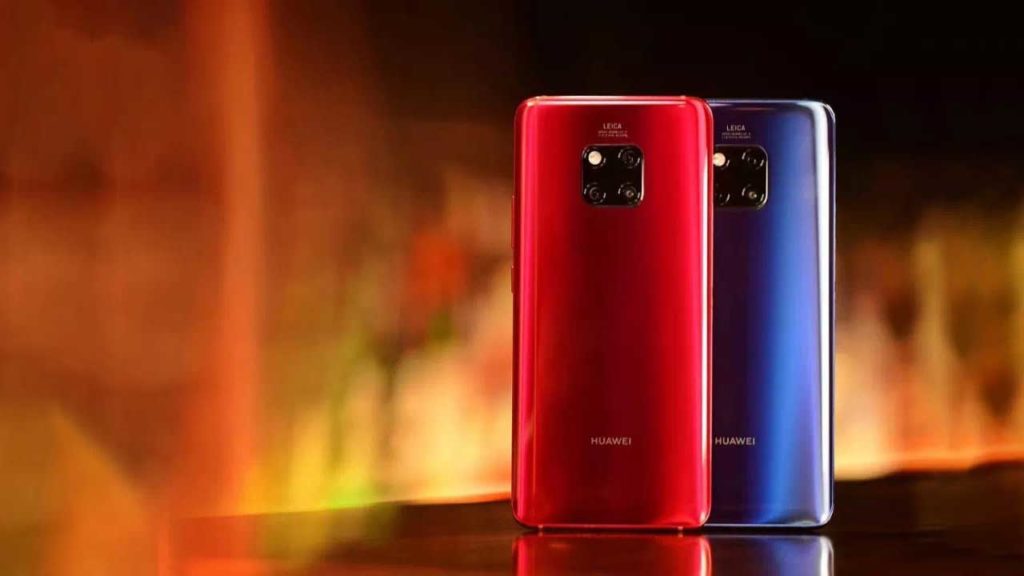
The Mate 20 Pro and iPhone XS are also water-resistant to IP68 standards, so they can be submerged in up to 2 meters of water for 30 minutes. An IP68 rating should come in handy in a tropical country like the Philippines where it rains all throughout the year.
Both Huawei and Apple obviously deserve a ton of credit for coming out with two attractive designs this year (though the iPhone XS is hardly original). However, the Mate 20 Pro wins out in terms of usability, thanks to its curved display and back which wrap around the edges of the device to make it sit in the hand nicely.
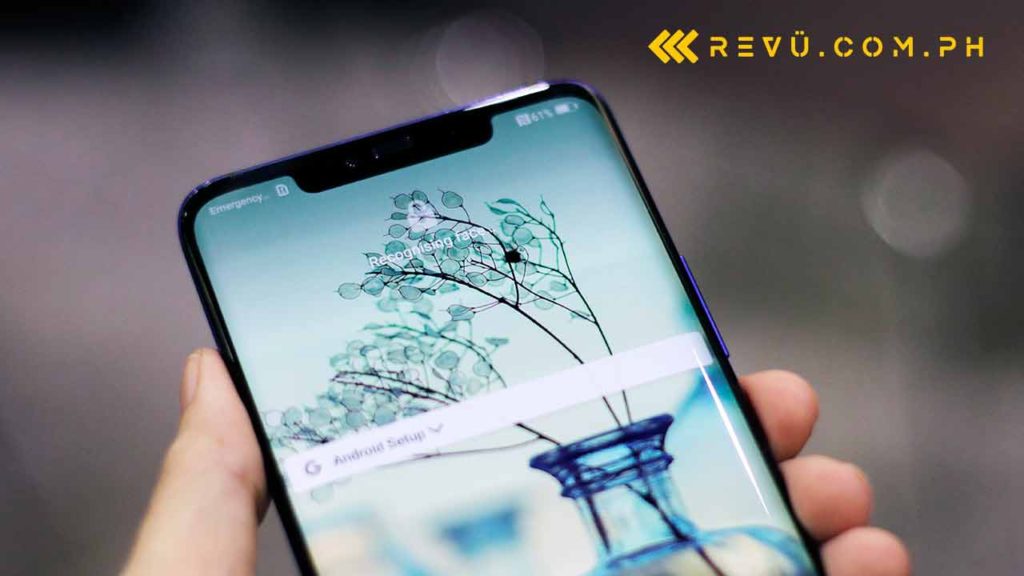
The 2018 iPhone’s curves are much more subtle, and therefore much less a factor when holding it in one hand and operating it. We enjoy using the Mate 20 Pro a bit more, and we like that it’s a large-screen device that’s also a good fit in the hand.
See the difference
On the front, both the Huawei Mate 20 Pro and Apple iPhone XS feature OLED screens that allow for a smaller footprint. The Mate 20 Pro arrives sporting a larger 6.39-inch display, while the iPhone XS is 5.8 inches diagonally.
SEE ALSO: Watch: 7 camera tricks for the Huawei Mate 20 Pro
The screens themselves are a real pleasure to look at — bright and punchy, with excellent contrast and saturation and true blacks. Both are specced for visually intensive games and streaming services such as Netflix and YouTube, especially since HDR is available if the content supports a wider range of colors.
There does exist one notable difference between the Mate 20 Pro and iPhone XS, though. The Huawei phone enjoys a significant advantage in resolution and sharpness compared to its rival, despite offering more screen real estate. The Mate is sharper at around 538 pixels per inch versus the iPhone’s 458 pixels per inch.
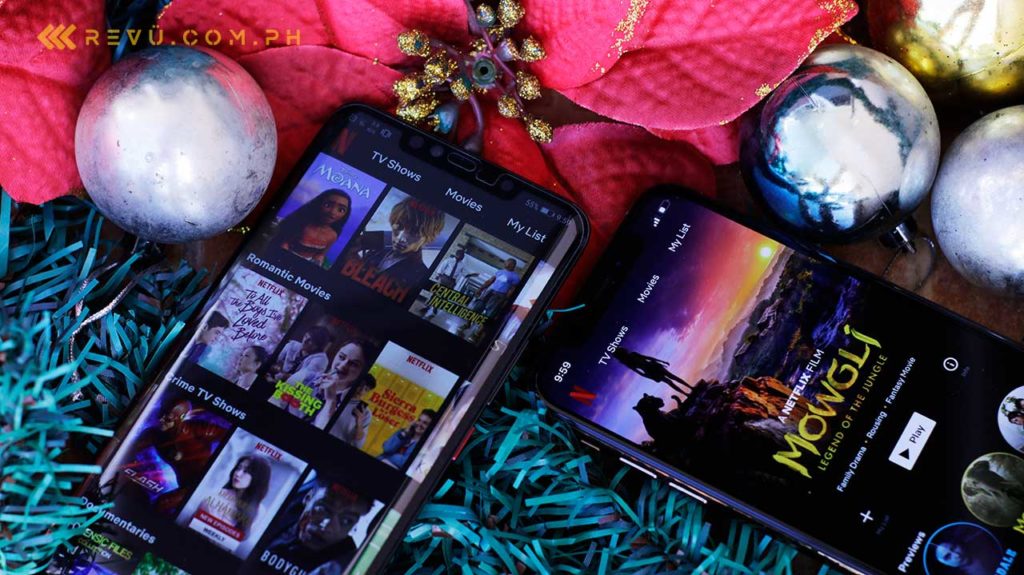
On paper, a bigger and clearer display means a better visual experience when watching a video, gaming, or reading. Our experience with both smartphones suggests that holds true in practice as well; we actually prefer using the Mate 20 Pro for videos and games.
If you don’t like the way it looks, the notch can even be masked on the Mate 20 Pro, thanks to an option in the settings menu that makes the status bar black, effectively hiding it from plain view. Unfortunately for the notch-averse out there, the iPhone XS (and all other iPhones) lacks such an option.
Triple or dual cameras?
We’ll be straight about it: The Huawei Mate 20 Pro and Apple iPhone XS are two of the best camera phones we’ve had the pleasure of testing, and many will probably feel the same after spending weeks with these flagships.
The new Mate features a triple-sensor setup, same as Huawei’s P20 Pro, but with one key difference: It loses the monochrome or black-and-white sensor of the latter and gains a 16mm ultra-wide option that you can play around with. Not only is it suitable for landscape photography and taking pictures at creative angles, it also allows the Mate 20 Pro to get extremely close to a subject without losing focus.
The Mate’s 40-megapixel primary camera is also wide at 27mm, while the telephoto camera has an 8-megapixel sensor and is capable of up to 10x zoom when enhanced digitally. When used in tandem with the zoom camera, the 40MP shooter mimics the effect of DSLR photography and takes portrait-style photos with background blur.
Taken in London. We love sharing this particular post because it shows exactly how exceptional the Mate 20 Pro’s zoom lens is
One more. Still great even though the sun was about to set. You know how it is: the lesser the light, the harder it is to shoot good-quality photos
Apple, on the other hand, pairs a 12-megapixel main camera on the back of the iPhone XS with a 12MP telephoto option that together offers up to 10x digital zoom for photos. Like the Mate 20 Pro, the latest iPhone can snap pictures with a blurred-out background as well, with the added feature of adjusting the depth effect after the fact even.
This time, however, it’s the Huawei handset that edges out Apple’s finest in everyday shooting situations simply because the Mate 20 Pro is more adaptable, boasting its own ultra-wide lens in addition to wide and telephoto options. That versatility is in full display in the samples below. With a handheld night mode, the Mate is set up to be an excellent performer in low light, too — without the need for a tripod or stand.
[sciba leftsrc=”https://www.revu.com.ph/wp-content/uploads/2019/01/Huawei-Mate-20-Pro-sample-picture-ultra-wide-review-Revu-Philippines.jpg” leftlabel=”Huawei Mate 20 Pro” rightsrc=”https://www.revu.com.ph/wp-content/uploads/2019/01/Apple-iPhone-XS-sample-picture-review-Revu-Philippines.jpg” rightlabel=”Apple iPhone XS” mode=”horizontal” width=””]The winner is as clear as day
[sciba leftsrc=”https://www.revu.com.ph/wp-content/uploads/2019/01/Huawei-Mate-20-Pro-sample-picture-ultra-wide-review-Revu-Philippines-a.jpg” leftlabel=”Huawei Mate 20 Pro” rightsrc=”https://www.revu.com.ph/wp-content/uploads/2019/01/Apple-iPhone-XS-sample-picture-review-Revu-Philippines-a.jpg” rightlabel=”Apple iPhone XS” mode=”horizontal” width=””]The Mate is more versatile, allowing you to be more creative with your pictures
[sciba leftsrc=”https://www.revu.com.ph/wp-content/uploads/2019/01/Huawei-Mate-20-Pro-sample-picture-ultra-wide-review-Revu-Philippines-b.jpg” leftlabel=”Huawei Mate 20 Pro” rightsrc=”https://www.revu.com.ph/wp-content/uploads/2019/01/Apple-iPhone-XS-sample-picture-review-Revu-Philippines-b.jpg” rightlabel=”Apple iPhone XS” mode=”horizontal” width=””]One more case for the ultra-wide lens, this time a night shot
[sciba leftsrc=”https://www.revu.com.ph/wp-content/uploads/2019/01/Huawei-Mate-20-Pro-sample-picture-night-review-Revu-Philippines.jpg” leftlabel=”Huawei Mate 20 Pro” rightsrc=”https://www.revu.com.ph/wp-content/uploads/2019/01/Apple-iPhone-XS-sample-picture-night-review-Revu-Philippines.jpg” rightlabel=”Apple iPhone XS” mode=”horizontal” width=””]Better even if not in ultra-wide mode. The one shot on the iPhone is too yellow
[sciba leftsrc=”https://www.revu.com.ph/wp-content/uploads/2018/11/Huawei-Mate-20-Pro-auto-mode-camera-review-Revu-Philippines.jpg” leftlabel=”Auto mode” rightsrc=”https://www.revu.com.ph/wp-content/uploads/2018/11/Huawei-Mate-20-Pro-night-shot-mode-camera-review-Revu-Philippines.jpg” rightlabel=”Night mode” mode=”horizontal” width=””]And with the Huawei Mate 20 Pro’s Night mode, you can make your pictures come alive
Note that Huawei has made its flagship camera system even smarter this generation, with the dual-NPU (neural processing unit) Kirin 980 at the helm.
That means the Mate 20 Pro can recognize more scenes now and doing so a lot quicker. It not only automatically adjusts the camera settings for a particular scene, but it can help with composition and make it easier to frame your subject properly. During our use, we found the phone’s artificial intelligence-enhanced camera software to be genuinely helpful.
READ ALSO: What makes the Huawei Mate 20 Pro’s cameras a cut above the rest
Though Apple doesn’t refer to AI when talking about its latest smartphone cameras, the iPhone XS touts a new Smart HDR function that combines a series of photos with different exposures into one to improve the dynamic range and shadow and highlight detail at the press of the shutter button.
In the real world, Smart HDR helps avoid blown-out pictures, while making those taken in low light look more balanced and defined. But it won’t help you frame your shots or select the right shooting mode and settings for your subject the way the Mate 20 Pro’s onboard AI will.
More bleeding-edge features
While the Huawei Mate 20 Pro is about as advanced as smartphones get right now, there are still a few extra features worth highlighting. First, it has a fingerprint reader built into the display that — as you might have guessed — works well enough for logins. And we haven’t encountered any major issues with speed or accuracy in the time we’ve been using our unit.
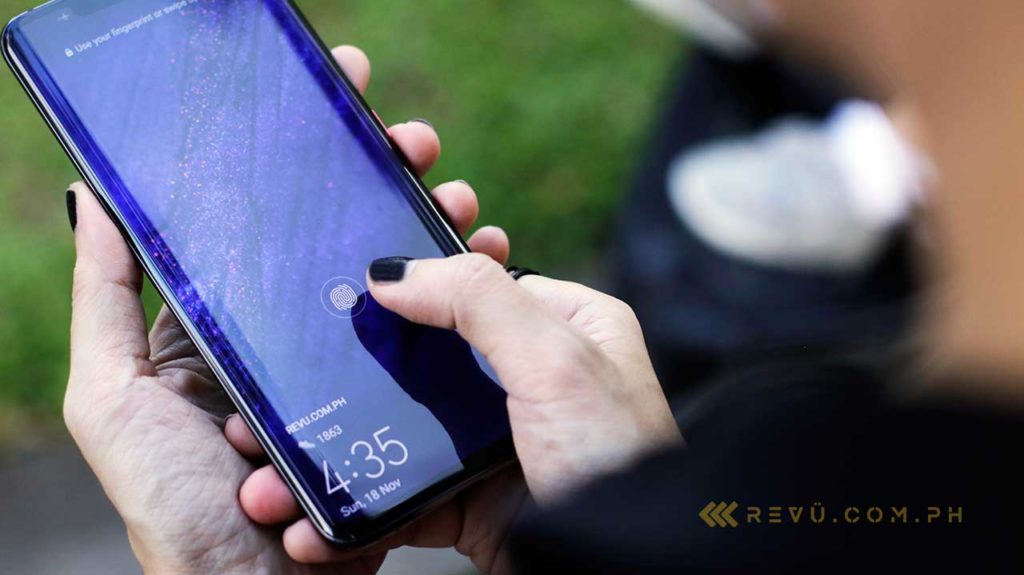
It’s not remarkably better than using your face to unlock the home screen. Both are good options; but defaulting to fingerprint unlocking could mean fewer errors in dark areas.
Secondly, there’s fast wired and wireless charging. Astonishingly, the Mate 20 Pro supports 40-watt charging with the included power brick that has been claimed to bring the battery to 70 percent after 30 minutes connected to the charger. In actual testing, it is able to top off a dead battery in a little over an hour.
The Mate 20 Pro supports 40-watt charging, which enables it to be 70-percent charged after only 30 minutes.
The iPhone XS does have quick-charging support. However, you’ll need to buy a compatible charger separately to be able to enjoy the quicker charging speeds enabled by Apple. Worse still, buying a first-party fast charger from Apple will cost you — to the tune of at least P3,080 or $58 on the local Apple Store website. Oof.
Thirdly, there’s wireless reverse charging on the Mate 20 Pro, which you can enable in the settings to keep compatible devices powered up without the inconvenience and nuisance of wires. The fact that it can act as a wireless power bank for the iPhone XS has to draw a smirk from some owners.
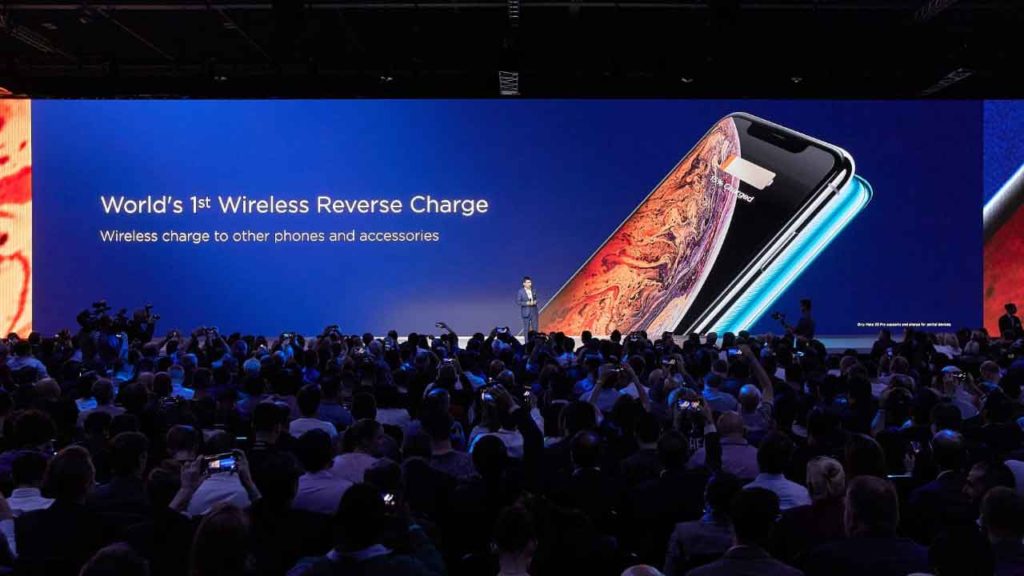
Neither device has a microSD card slot for stretching the base storage. Though the Mate 20 Pro offers the option of popping in a nano-SIM-size memory card to allow you to store more apps and files offline.
The Huawei handset can accommodate dual SIM cards on 4G LTE networks, if you need to go abroad or need different personal and business numbers, for example. Whereas the only way the iPhone XS can hold two numbers at once is by using an eSIM, short for embedded SIM, or digital SIM — at least that’s the case for units officially sold in the Philippines.
Addressing the price gap
In the Philippines, the Huawei Mate 20 Pro costs P49,990 or roughly $943 for 6GB RAM and 128GB storage, with no other configuration available here. The Apple iPhone XS officially starts at P67,990 ($1,282) for the base unit with 64GB storage, and ponying up P90,490 ($1,706) gets you a whopping 512GB of memory.
SEE ALSO: Mate 20 series tops ranking of best-performing Android phones
That’s a staggering difference in price, especially considering the Mate 10 Pro sequel is the better choice all around. It looks better and feels great in the hand, too; the OLED on the front is taller and sharper and gives you more screen estate without making the handset harder to hold; the triple-lens camera makes it much easier, almost a no-brainer, to take brilliant images even if you know nothing about photography; and it offers all the cutting-edge features you could want in a flagship phone and then some.
And the winner is…
When you factor in the local pricing, it becomes clear that unless you are able to get the newest iPhone on a super-cheap contract then we would always recommend opting for the Huawei Mate 20 Pro. Even if pricing is off the table, if money is no cost, we’d still lean toward the Huawei handset. It gets our vote for the best smartphone of 2018.
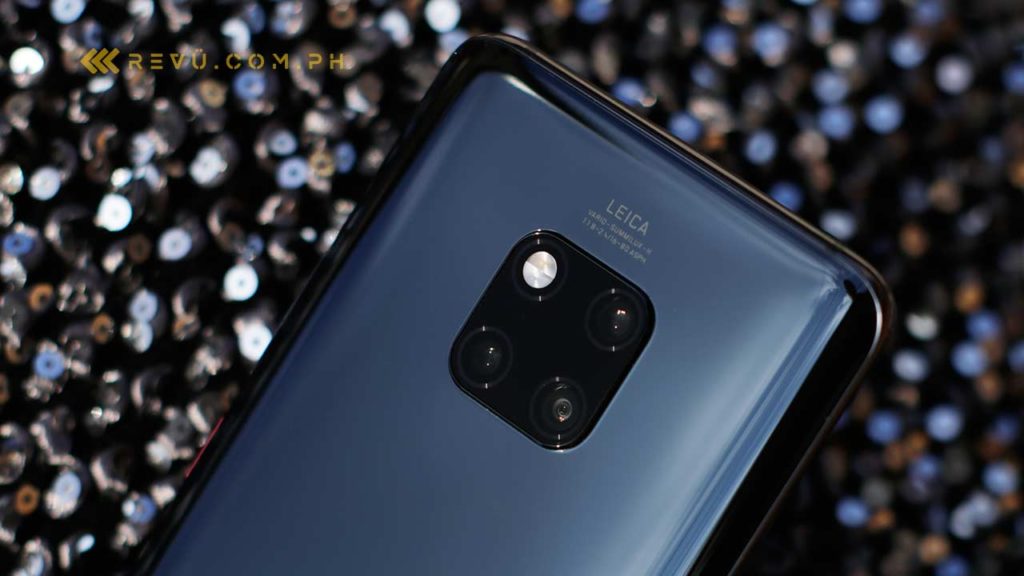
Huawei Mate 20 Pro specs
- 6.39-inch OLED display, 3,120 x 1,440 resolution (19.5:9 aspect ratio)
- Octa-core Kirin 980 processor
- 6GB RAM
- 128GB expandable storage (via nano SD card)
- Triple rear cameras with Leica lens and LED flash (40MP main camera, 20MP ultra-wide camera, 8MP telephoto camera)
- 24-megapixel front camera with
3D system for face unlock - Fingerprint sensor (in-display)
- 4,200mAh battery with 40-watt fast charging
- Android 9.0 Pie
Apple iPhone XS specs
- 5.8-inch OLED display, 2,436 x 1,125 resolution (19.5:9 aspect ratio)
- Octa-core Apple A12 Bionic processor
- 4GB RAM
- 64GB/256GB/512GB non-expandable storage
- Dual rear cameras with LED flash (12MP main camera, 12MP telephoto camera)
- 7-megapixel front camera with 3D system for face unlock
- 2,658mAh battery with 18-watt fast charging
- iOS 12.1
Share this Post


